Much like love, coal tits are all around us, though you might not always believe it.
Coal tits are most often noticed in winter in gardens. They’re shyer and less plentiful than the great tits and blue tits, less colourful too.
They dart in to bird feeders when they get the chance, but are often bullied off by the bigger birds.
It’s often only when you see the little white patch on the nape of their neck that you can be sure it’s a coal tit.
In the breeding season, it may well seem as though they have entirely disappeared. But this is not always the case.
Coal tits like to spend much of the spring and summer high up in coniferous trees.
Knowing their song may reveal their continued presence among any pine trees in your neighbourhood.
Coal tits can sound VERY like great tits, with a two-note rhythm that’s quite variable. But it tends to be higher-pitched, rather sweeter-sounding and less mechanical.
They also often sound like they want to sing three notes, rather than two.
Rather than the great tit’s ‘teacher, teacher’ you might hear the coal tit more as ‘tee-tow-a, tee-tow-a’, or ‘too-a-tee, too-a-tee’.
Another way to think about it: if the great tit’s song is a squeaky bicycle pump for a proper bike, the coal tit’s pump is for a toy one.
A final useful clue is how much your neck aches as you attempt to spot the bird making the noise.
Coal tits really do like the top-most branches of conifer trees, which makes them look especially tiny from the ground. If you catch a glimpse of them fidgeting around in the canopy they will appear much shorter tailed than a great tit too.
Like goldcrests, coal tits are birds that evolved in coniferous woodland, and have spread into gardens and parks with the planting of non-native pines. In these areas they are widely if somewhat thinly spread.
If you really want to get their sounds embedded in your brain, visit a heathland or some dense plantation forestry during spring. In these places you are likely to hear dozens of coal tits, giving a host of variations on their sweet song.
And once your ear is tuned to that noise you may be surprised how just how many places you find coal tits.
There was one in our local car park this morning, right in the middle of town, singing away in the lone Scots pine there. By far the most interesting feature of that or most other car parks as far as I’m concerned.
So for coal tit, ask whether it’s:
Two notes but verging on three
Sweet rather than mechanical
Coming from a pine tree
Making your neck hurt
📖 Read of the Week:
The Curious Case of the Pygmy Nuthatch
“It was one of the weirdest errors ever committed to film. It took me months to uncover how it all went wrong.”
Tricky movie productions. Spectrograms. The origins of bird protection in the US. This intensely nerdy, bird-shaped rabbit hole is one worth falling into.
Read the full article on Slate.
(thanks for the recommendation)
This is the 26th instalment in 2025’s cycle of Shriek of the Week. You can catch up with Robin - which includes details of how this works - as well as Wren, Song Thrush, Blackbird, Great Tit, Dunnock, Chaffinch, Goldcrest, Nuthatch, Chiffchaff, Skylark, Great Spotted Woodpecker, Blackcap, Starling, Willow Warbler, Nightingale, Whitethroat, Swift, Redstart, Greenfinch, Turtle Dove, Spotted Flycatcher, Firecrest, Garden Warbler and Nightjar.
For those who can, subscribing to the paid tier of Shriek of the Week supports me to write more and keep this all going.
It also gets you access to the full A-Z archive of Shriek of the Week AND our livestream-hopping Early Bird Club call - the next is 8am BST (GMT +1) on Saturday 5 July (tomorrow!)
Thanks to all continuing subscribers for your support.
Media credits:
Thanks to the British Library for the sound clips and to TheOtherKev for the image of a coal tit.


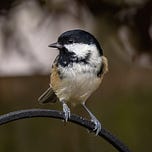




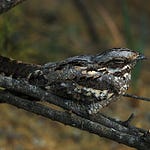
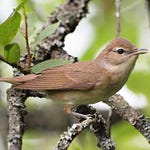

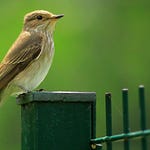


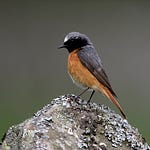
Share this post